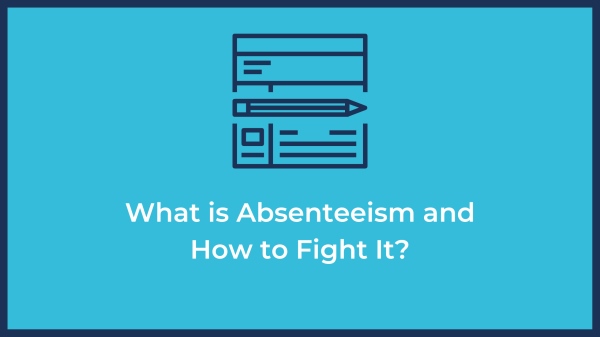What is Absenteeism and How to Fight It?
Published: 04/08/2018
Free trial
See for yourself how you can save time and money. Enter your details below for a free 30 day no-obligation trial.

If you work in HR, are a manager, or own the company, you are likely to encounter absenteeism. Whether you have been able to identify it or not is another matter. In this article, we will provide you with pointers on how to recognize it moving forward and what steps to take to prevent it.
There’s a significant difference between employees taking time off and calling in for emergencies or sick days. When it comes to annual leave, which they are legally entitled to, you can approve it in advance and plan for how to manage your processes with a smaller workforce.
However, when employees call in sick or take emergency leave, you are put on the spot. While you cannot reject such claims due to the risk of them being genuine, there’s always a chance that your workers want a day off without using their holiday allowance. This malpractice is known as absenteeism.
Absenteeism occurs when employees frequently miss work without a valid reason. This issue affects organisations of all sizes, causing harm to various aspects of the business.
Absenteeism can create several challenges for managers and their teams: workflow is disrupted, productivity is affected, and employees who do come into the office experience increased pressure to handle the extra work.
Naturally, lower performance leads to financial losses. However, it can also be particularly damaging to the office atmosphere and teamwork. Employees who bear the burden of those engaged in absenteeism are likely to become resentful toward their colleagues. They might also lose trust in you for allowing this to occur.
Often, addressing absenteeism is not nearly as difficult as identifying it in the first place. It is nearly impossible to determine whether the short-term leaves your staff take are valid or not, especially if they’re discreet about it. Unless you know what to look for, you may never discover that one or more of your employees is engaged in this issue. Absenteeism only becomes evident when a pattern emerges.
In other words, there’s a significant chance you will lose a considerable amount of money by the time you realise something is amiss. Understandably, you can’t be expected to micromanage each staff member’s time off; it would be time-consuming, damaging to relationships, and downright impossible in larger organisations. That said, the most effective way to combat absenteeism is to prevent it.
Suffice it to say that excessive employee absences can significantly impact businesses, both small and large. Typically, if you notice it happening, the damage has already been done. Next, we will discuss prevention measures you can take.
To begin addressing absenteeism, it’s essential to implement systems that effectively monitor absence levels and identify potential issues. Tools like Timesheet Portal allow business owners and HR departments to track, authorize, and report employee absences.
Our portal uses the Bradford Factor score to calculate absence levels, a formula that helps manage short-term staff absences and identify when they have become excessive so you can take action.
There’s often a deeper reason for absenteeism than simply needing an occasional day off. It’s important to review your relationship with employees. Do they view you as someone they can trust? Absenteeism often occurs when workers are afraid to admit to their superiors that they’re burnt out, having a tough mental health day, or needing a day off for a small occasion, such as attending their child’s school play.
Fostering a trust-driven office culture and showing empathy towards your workers’ needs often reduces the likelihood of them feigning illness or other emergencies to secure time off. To help you create that kind of environment, we suggest reading Kim Scott’s Radical Candor.
While absenteeism affects all sectors and businesses, a specific trend has emerged. The size of the company significantly influences how severely it is impacted.
A recent study by Group Risk Development (GRiD) found that absenteeism is a more significant issue for larger firms compared to their smaller counterparts. This is hardly surprising, considering the lack of personalised approaches in most large businesses. Without an automated solution, it becomes challenging to identify and tackle absenteeism when managing a higher volume of employees.
Polling 500 HR decision-makers across 500 UK companies, GRiD discovered that those with more than 250 employees experience the highest absence rates, averaging 7.5 days per year. In contrast, micro-businesses, defined as those with one to nine staff members, average only 2.8 days.
Absenteeism is a problem that, once discovered, has already caused damage. The best approach to control it is to prevent it from occurring. It’s easier to address in smaller organisations, where managers have more time to monitor each employee, whereas it becomes physically impossible in multi-level corporations.
The key to tackling absenteeism is to prevent it in the first place. Since it is identified by spotting patterns, adopting time tracking software allows you to easily analyse your staff’s time off work and highlight potential malpractice as soon as it arises. Even better, however, is nurturing mutual trust between management and workers, thereby eliminating the need for absenteeism.
Unsure which time tracking software is best for the task? Give us a try.